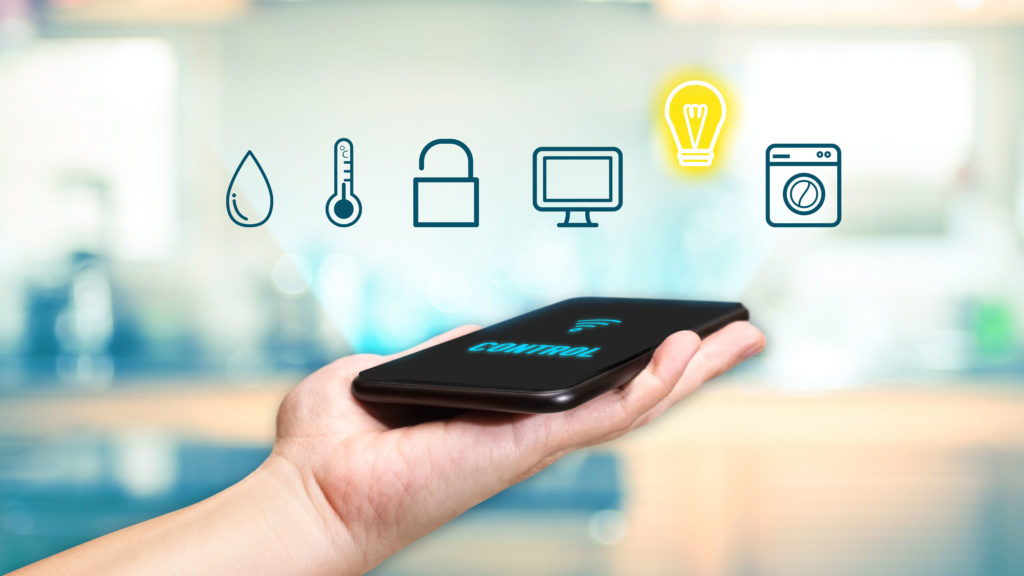Following on from our introductory article, “Alexa… Do I own a smart home?”, we have compiled a list of our top five features to look out for in smart homes. Some of them are already blowing up across the world and others will take off in no time!
Not only are they making people’s lives easier but they can save your money and energy wastage. Friends to both the environment and busy people, here’s our top picks:
Single applications
Probably one of the most redeeming of aspects of smart homes, and one which outweighs the hefty installation costs. Easy operation and access to your new home features is ensured through the centralisation of functions.
Referred to as the “smart home door opener” by EnOcean, a provider of energy harvesting wireless technology. They predict that operations, such as the ‘on/off’ function of a wall switch, will become incorporated into the core controller of all aspects of the home.
Single App mode, according to digital publication, hexnode: “enables a locked-down experience on devices by restricting the user access to a single application. It helps devices function in a purpose-driven mode where non-essential applications and device settings are rendered inaccessible.”
Smartify explains that the core controller or hub can communicate with many or even all of your devices. They register the input command from users to perform an action, thus acting as the mediator between users and sensors.
Lighting control
With a centralised hub to control your light switches, why not add smart lighting?
Not only can you control your lights from the tap of a tablet, but you can actually incorporate other intelligent features that add environmental benefits! Smart LED bulbs are longer lasting whilst also using less energy.
Philips-hue, the smart lighting sub-sector of electronics provider, Philips, propose a variety of benefits of smart lighting. Automation allows you to set timers for lights to turn on and off, as well as innovative features such as ‘instant mode lighting’. This means that you can customise the colour of the lighting to create ambience for any situation.
Smart security add-ons
Features such as doorbell cameras as taking the world by storm. With the ability to see who’s knocking at your house, right from your phone, people feel safer and can ignore unwanted guests.
Taking this a step further are smart locks. They not only fulfil the security function of a home but make day-to-day routines more convenient. Safewise suggests that there are a range of styles to choose from. These include traditional touchpad models or newer types which forego keypads in favour of a mobile app.
Security can be incorporated into just about any feature of the smart home. You can light your entire house up with a simple click or voice command if you feel unsafe. CCTV, now commonplace in the domestic sphere, offers home-owners visual access and recordings to all areas of their residence.
Energy-harvesting sensors
Battery-free wireless switches, currently in existence and set to become more universally usable, use kinetic energy harvested from switch operation to generate power.
EnOcean explains that they can also draw upon solar energy or heat differential. This is the ‘Peltier effect’. You can “peel and stick” these sensors, according to their UK Sales Manager, Simon Johnson, making them suitable for old and new homes. Such technology will further reduce energy usage and carbon emissions.
Smart thermostats
Intelligent lighting devices, thermostats can regulate themselves on timers. You can also remotely control them from a mobile device. They sense when you’re in your home to optimise their usage, and only activate when needed.
Recent tech trends, as suggested online by TechHive, combine sensors and thermostats to heat your most frequently occupied rooms, as opposed to just triggering heat based on the thermostat’s location which is often in a hallway you may only pass through.
Effiency Vermont states that smart thermostats can actually learn and retain information about a household’s patterns. Thus, they become a preferable alternative to conventional and manual thermostats.
